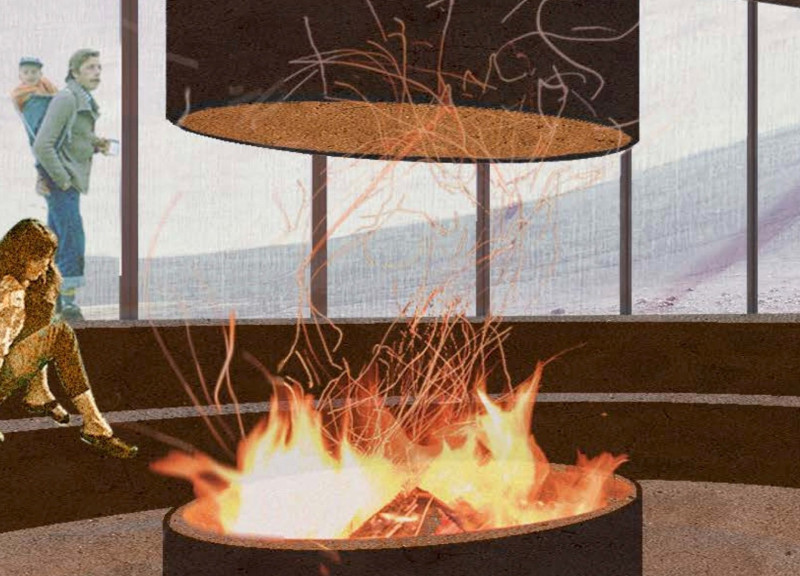5 key facts about this project
The Hverfjall volcano visitor center, known as "Arinn," is designed to blend with its unique Icelandic landscape. Located at the base of Hverfjall volcano, the center serves visitors by providing essential services while respecting the environment. The design concept centers on minimizing visual impact and promoting sustainability through the reuse of existing structures, resulting in a unified integration with the natural surroundings.
Design Concept
The plan highlights sustainability by incorporating the site’s existing buildings, which helps save resources and reduce waste. Arinn’s layout is designed to maintain continuity and only includes new elements that are necessary for visitor functions. This approach keeps the character of the original structures intact while providing modern amenities.
Facade and Reflection
A key feature of the design is the mirrored facade, which uses metal sheeting on the existing buildings and mirrored glass on the new addition. This allows the structure to reflect the colors and light of its surroundings, aiding its integration into the landscape. The sloping roofs add to this visual harmony while softening the transition between the natural and built environments.
Structural Approach
The building is designed to hover slightly above the ground, which minimizes earthworks and preserves the natural terrain. Access to the café is achieved through a footbridge that connects the addition to existing structures without further altering the landscape. This elevated form respects the delicate ecology of the region while still providing necessary visitor access.
Interior Experience
Inside, the visitor center follows a “house-in-house” design, where essential visitor spaces are enveloped in an insulated shell. This shell is protected by a weatherproof outer layer, providing durability against harsh weather. The fireplace offers warmth in communal areas, creating a welcoming atmosphere. Built-in features such as conversation pits and long benches encourage social interaction and direct sightlines to the beautiful landscape, enhancing the overall experience for visitors.






















































